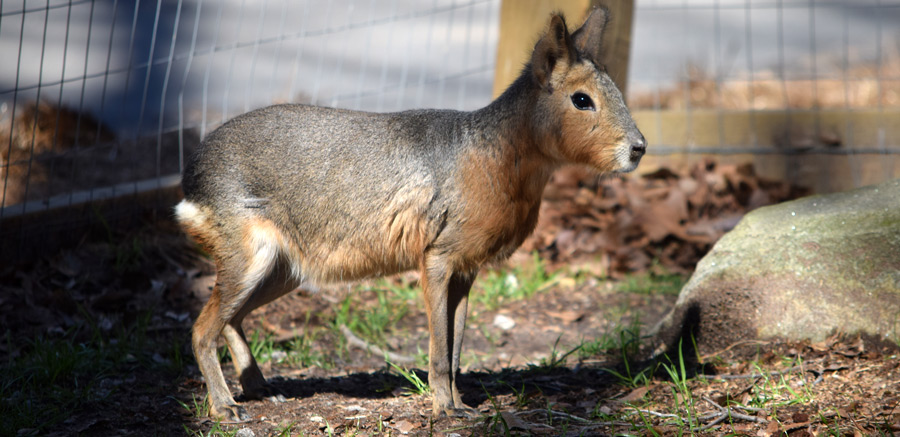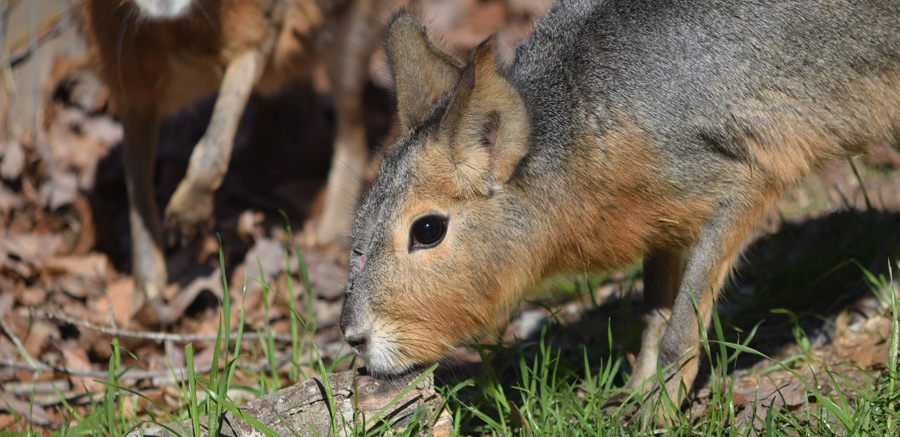
PATAGONIAN MARA
The Patagonian Mara is the third largest rodent in the world.
PROFILE
Tikel and Itza are siblings who came to us from an educational facility in Florida. Currently they are shy and skittish but are slowly warming up to the keepers, especially when they have their favorite treats, apples!
OVERVIEW
CONSERVATION STATUS
Least Concern
AVERAGE SIZE
Compared to a 6′ Man
AVERAGE WEIGHT
17 – 35 lbs
AVERAGE LIFESPAN
7 – 10 Years
DIET
Herbivore
REGIONS
South America
Found only in Patagonia, Argentina, these maras favor dry, open, and airy habitats. They look for shrublands, deserts, brushlands, and grasslands.
APPEARANCE
The Patagonian Mara looks like a small deer with long ears, similar to those of a hare. Its front legs are thin and used for digging while its hind legs are thick and strong allowing it to jump to safety quickly (up to 45 miles per hour). Patagonian maras have four toes on their front feet and three on their hind feet; each toe is equipped with strong claws. Their coat is primarily grayish-brown, with a white patch along with the chest and stomach and orange coloration around the flanks and head. It is darker toward the rump, with the exception of a bright white patch of hair that borders their hindquarters. Their coat is stiff, dense, and very fine in texture.


CHARACTERISTICS
Patagonian maras mostly eat grasses but will also eat cactuses, seeds, fruits, and flowers. Monogamous animals, they team up with a mate and tend to stick with them for life. Males are very protective of their mates. Social animals, they are known to gather in groups, called warrens or den systems. The populations of such groups can increase quickly. A shared burrow could have as many as 15 different mara pairs and their offspring. After a gestation period of 100 days, one to three pups are born. They are usually born in the open but quickly brought into the communal burrow where they will be cared for by the mother and protected by the father. After three to four months, pups will be weaned and leave the burrow on their own.


